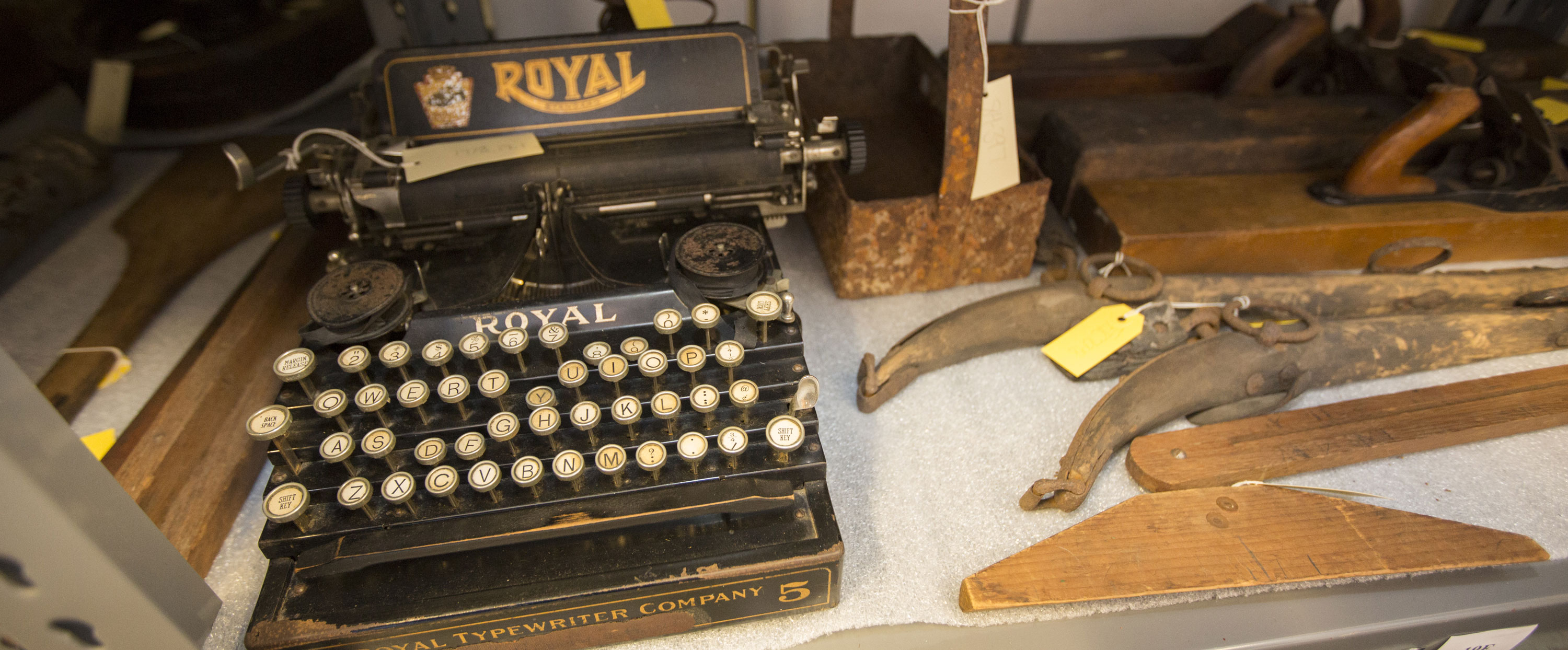Although it may resemble a trampoline, this is a fire safety net designed to catch those leaping from burning buildings. Patented in 1887 by Thomas F. Browder and manufactured by the Atlas Safety Equipment Company, the Atlas Life Saving Machine was an important fire response tool for close to a century until it was phased out for new technology. The net was designed to fold for easy storage, and to easily snap open for quick deployment.
The fire safety net in the Dubuque County Historical Society’s collection was used only once in its lifetime, during the response to the disastrous Canfield Hotel fire in 1946. Fire broke out in the six-story hotel late in the night of June 9 and spread quickly throughout the structure.
Held by a half dozen firefighters and civilian volunteers, this net caught 27 people forced to jump for their lives. The billowing smoke led to poor visibility for the rescuers, and for those jumping from the upper floors, which added to the chaos of the scene. Those jumping from above the fourth floor usually suffered impact injuries from the net, and several net holders were hurt by luggage thrown from the windows or by colliding with the jumpers. Sadly, one woman who jumped into the net struck the metal rim and died from her injuries.
In total, 19 people were killed in the Canfield Hotel fire. Many more were injured, usually with broken bones caused by jumping out windows. The Canfield Hotel fire occurred in a deadly year for hotel fires. Just a few days before the Canfield fire, the La Salle Hotel in Chicago caught fire, which killed 61 people. Six months later, the Winecoff Hotel in Atlanta, Georgia burned and killed 119 people, making it the deadliest hotel fire in United States history.
The fires at the La Salle, Canfield, and Winecoff were all spurred on by open staircases, which allowed the fire to spread quickly and trap many victims on higher floors. Following the deadly year of 1946, fire codes changed to address some of the issues highlighted by these tragedies. Hotel fires are no longer as common, or as deadly, as they once were thanks to sprinkler systems, improved fire codes, and better firefighting equipment. This net serves as a tangible reminder of a time when this was not the case.

